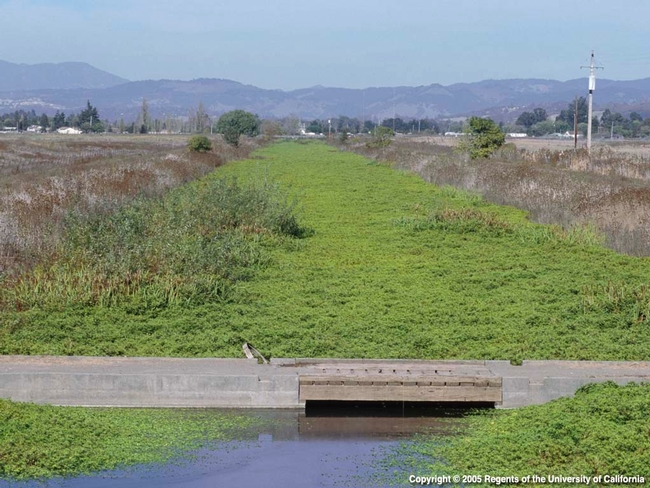A link to the July 29 press release from the Weed Science Society of America on several invasive weeds in the primrose (Ludwigia) family. The article features information from Dr. Brenda Grewell, USDA-ARS Ecologist who is located at UC Davis (just down the hall from yours truly).
Take care,
Brad
WSSA Weed Watch: ‘Shape-Shifting’ Primrose Plant Plagues Communities in Coastal States
Three water-loving species in the primrose family are now plaguing communities across the Pacific Northwest and Southern Atlantic — clogging lakes, ponds, canals, rice fields and sensitive wetlands. The exotic invaders are Uruguaian primrose-willow (Ludwigia hexapetala), large-flowered primrose-willow (Ludwigia grandiflora) and creeping water primrose (Ludwigia peploides subsp. montevidensis), all natives of South America.
Scientists with the Weed Science Society of America say the Ludwigia weeds can wreak havoc. They root in moist sediment with buoyant shoots that form mats on the water surface. They can grow underwater and can even free-float on the water surface. Often they will overwhelm native plants, degrade water quality, increase flood risk and reduce the available habitat for water birds and fish.
One of the world authorities on Ludwigia is Brenda Grewell, a WSSA member and research ecologist with the USDA Agricultural Research Service’s Exotic and Invasive Weeds Research Unit at the University of California, Davis. She says Ludwigia was imported to the U.S. for use in water gardens and aquariums, but soon escaped into the wild where it grows rapidly and spreads easily.
“One reason Ludwigia spreads so quickly is that it goes with the flow,” Grewell says. “Seeds, fruit and shoot fragments can float and readily establish in new locations. They also can be spread into new areas when they catch on boat propellers or on the hull of a canoe or kayak.”
Identifying Ludwigia can be complicated thanks to the weed’s “shape-shifting” ability. Like many aquatic plants, it adapts its leaf shape and appearance in response to the environment. Click here for a link to the rest of the article at WSSA.
Attached Images:
